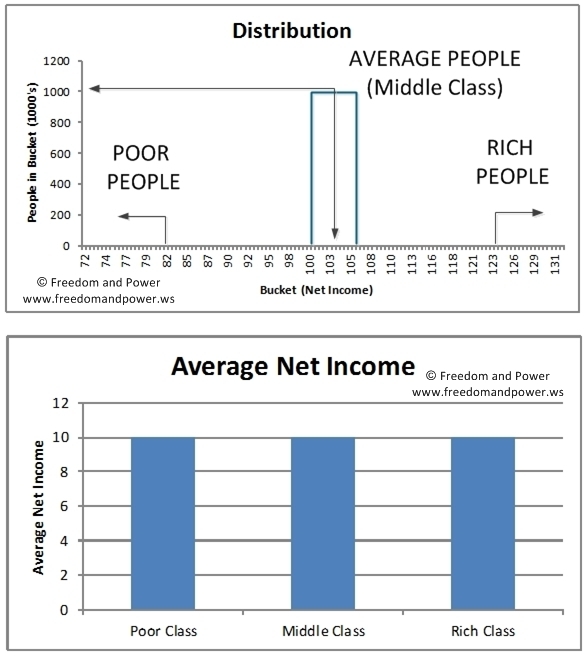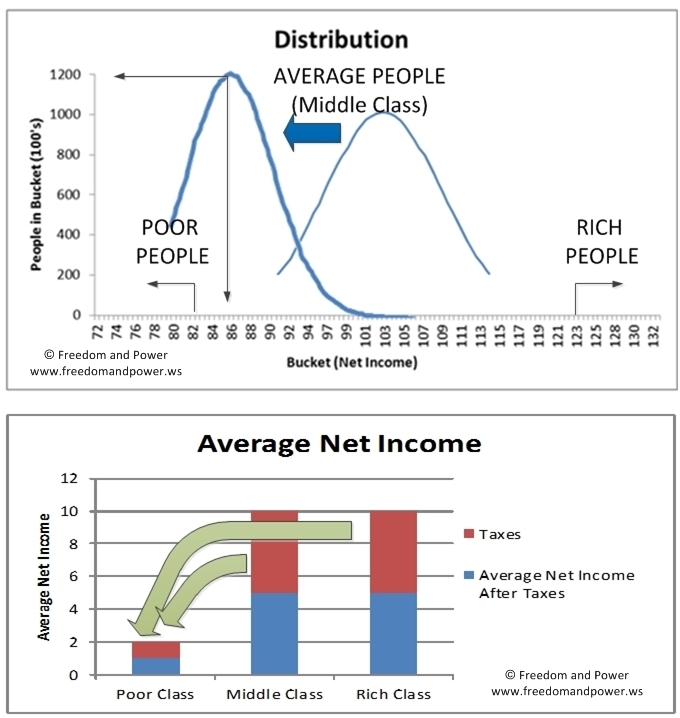Left Politics
We are all vaguely familiar with the concept of “social” governments or “left” governments or “communist” governments. We all have some idea that they increase taxes and spending. However, beyond that, we don’t really understand their economic view. Never fear. We are here to give you a taste of it.
Left-Politics Intended Effect
In general terms, the most extreme left political theory (communism) dictates that the “capital” is the source of all evils. Capitalists (the owners of capital) create companies which “exploit” workers. They pay low salaries and get to keep most of the profits. This would be patently unfair because is the worker’s work that actually creates profits. Therefore, the only solution is to take all capital away from capitalists and place it in worker’s hands, in the form of the ubiquitous and ever present communist government. Since the communist government is made of workers, one and the other are the same.
In this manner, all profits will be shared by all workers, more or less equally.
Socialist political theory is not so extreme. It dictates that some of what the communists say is true, but not to such a degree. Their theory says that markets are good, although they must be tightly controlled to prevent these evil, evil capitalists from getting away with too much profit. On the same topic, these capitalists that are allowed to participate in the market through the graces of the socialist government, must be taxed heavily so that their profits are more justly distributed among the workers. Some socialistic political theories are not so direct, so they wrap their dialectic into the notions of “social contract” or “social mortgage”. No matter. They all act in the same manner.
In the Communist utopian paradise, our distribution would look like this:

This essentially means that there is only one class or as they say, it is a classless society. Everybody earns more or less the same, with minor differences, which are based on needs. Also, since in this society all the means of production belong to the workers (aka the state), there are no taxes since there is no point in taxing oneself.
In the Socialist paradise, our distribution would look like this:

In this paradise, everybody except poor people pay taxes. However, the rich pay the most by far. Most of this money goes into the pockets of the poor people, but some end up in the middle class’ pocket. Yes, the middle class gives and receives at the same time (crazy, isn’t it?).
Since most of the money formerly belonging to rich people, this class disappears. Also, since all this money was taken from rich people and given to poor people, the poor people class also disappears. However, since a market still exists, part of a distribution also exists. Therefore, not all people earn the same and not according to their needs. This is a basic theoretical difference with communism.
Left-Politics Unintended Consequences
Now let’s take a look at what happens in reality.
In the Communist economic reality, we have:

There are several interesting properties we should mention. To begin with, there actually is a distribution curve and not a rectangular one. This means, that although the communists did their best (some would say their worst) to stamp-out any trace of a market, the market actually survived as a “black market”. This “black market” is no other than non-sanctioned free market. Because of this, a distribution curve spontaneously appears. But there is more, much, much more.
You may have noticed that almost all the people that were supposed to have a Net Income equal to the middle class, have actually fallen below the poverty line. In other words, an entire country subjected to communist economic policies became poor, not middle class as it was forecasted. Furthermore, this is not a “glitch” in the system; this is a direct consequence of the communist system.
The reason for this problem has been summarized by economists as “misallocation of capital”. What this means is that in a given country there is only so much money, resources and people. How you distribute them to manufacture goods and services makes all the difference. As we have showed you in our lesson Communists Can’t Count, it is simply impossible for a communist economic system to distribute efficiently available resources. As a consequence, a great deal of economic resources are spent creating goods and services that people don’t want and can’t use. Worse. All these goods and services do not create an economic process that feeds onto itself, hence there is no economic growth. People are stuck with “stuff” they don’t want nor need and at the same time, the economy is constantly decelerating. Everybody is becoming poorer.
However, there is yet another anomaly worth mentioning. Have you noticed the small “bump” far, far to the right in the distribution? Suspiciously enough, it is a very small group of people that became immensely rich. How is this possible? Simple. In a communist country the governing elite becomes super-rich. This can be seen in the Average Net Income bar graph, where the Poor Class and the Middle Class are equally poor, while the Rich Class became super-rich. This is no coincidence. While communists propagandized equality of income, their leaders accumulated power, which was the equivalent of wealth under that system. It is quite simple, really. In a communist system, you cannot become rich since the accumulation of money is more or less forbidden. However, why do you need money when you can simply pick-up the phone and order the system to give you a new car or house or a shopping trip to London all expenses paid? This is the true embodiment of wealth.
In the Socialist economic reality, we have:

To a degree, this distribution is similar to the Centre-Politics Unintended Consequences. This is most certainly so, because both, the Center and Social politicians have similar economic policies, albeit justified by different theoretical reasons.
We can see that there has been a considerable shift of the middle class towards lower Net Incomes and a significant increase in numbers in the poor class. Rich people have disappeared altogether by conversion into the middle class. Both, the former rich class and the new (and impoverished) middle class continue to supply taxes to the government to support the ever growing poor class.
The reasons for this shift are quite clear by now. Socialists remove vast amounts of productive capital from the economy. As such, the economy enters into a slow spiraling down cycle of poverty. Everybody becomes poor. No surprises here.
It is to be noted that the distributions we are presenting here tend to be a more extreme example of social-politics. How far will the middle class drop and how bad will the economy be, depends entirely of how close the social economic policies approximate communist policies. The closer, the worse it will be.
We also know that some pundits will point out that there are a few highly socialist countries (such as Sweden) who seem to defy this point of view. The answer to this apparent contradiction is quite simple: debt. One must not forget that for as long as there is money to burn, any political or economic system can be made to work. However, this is not sustainable. It is a make-belief process. When the music stops, the curve shifts to the left suddenly and drastically. We have seen this happening time and time again (take Greece for example), and it will happen again. It is inevitable.
Note: please see the Glossary if you are unfamiliar with certain words.
Continue to Austrian Economics In Pictures - Part 4

